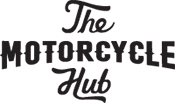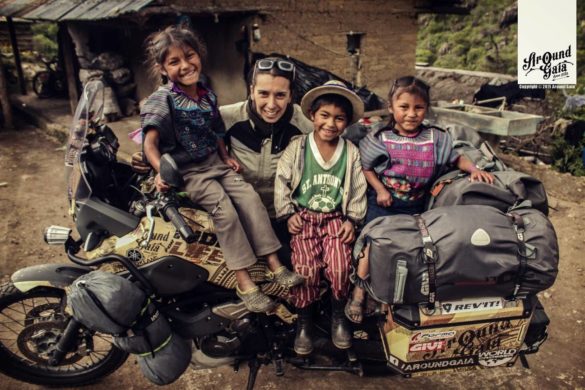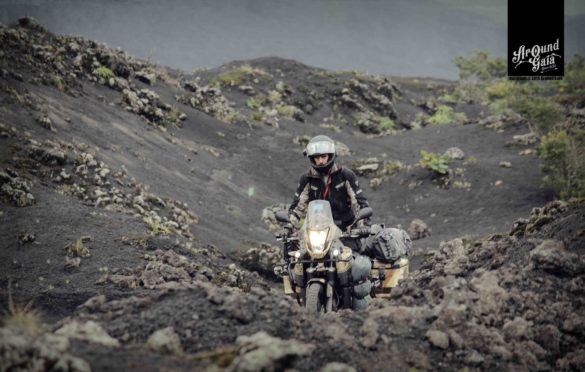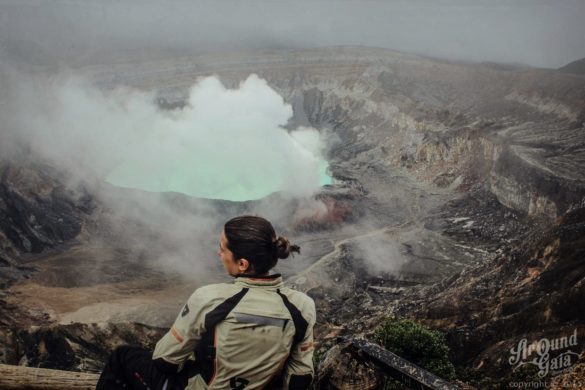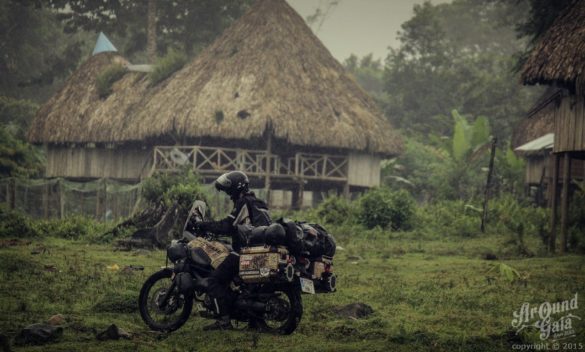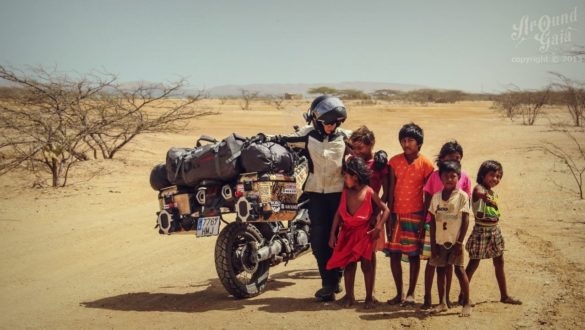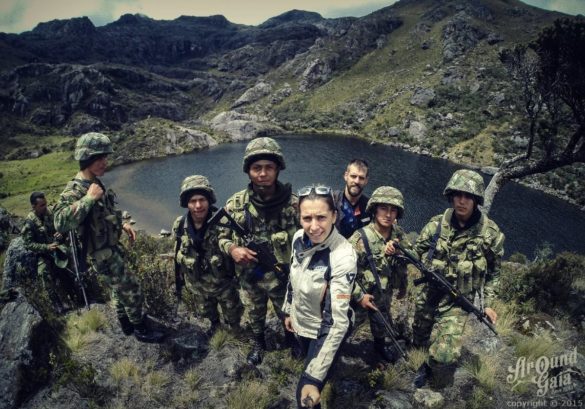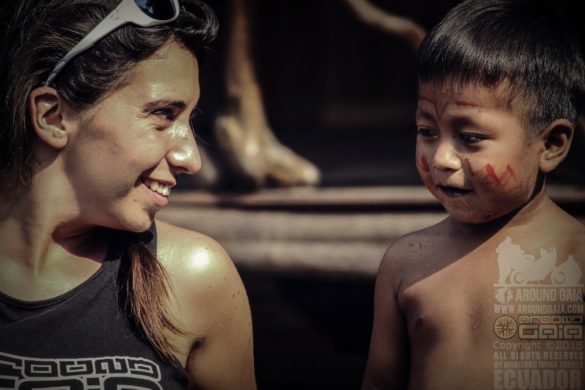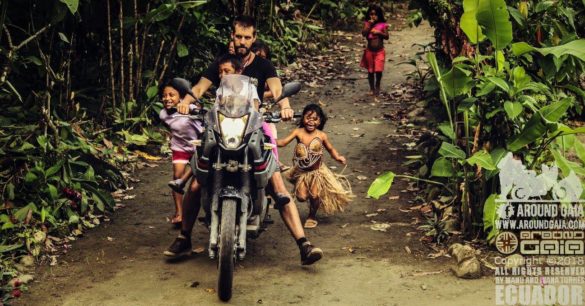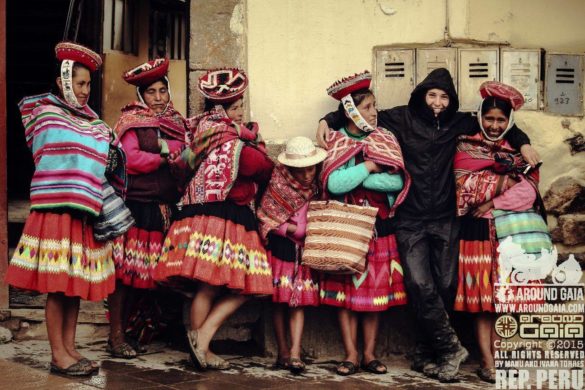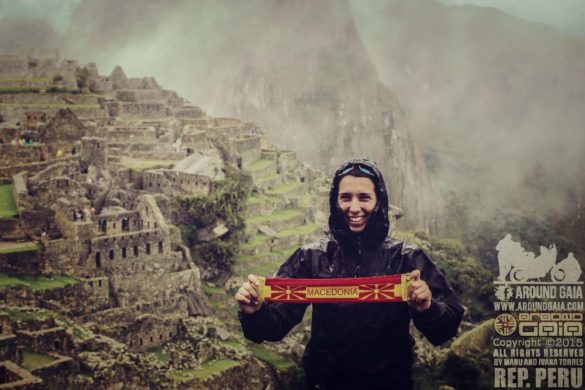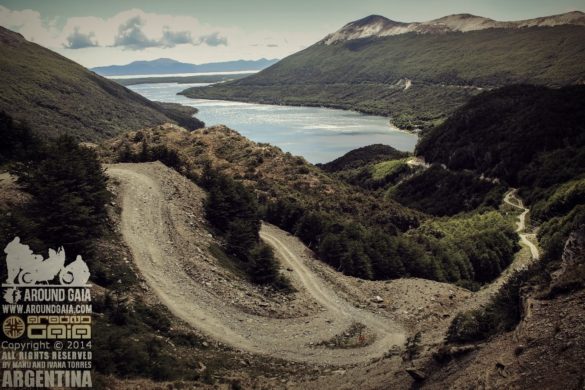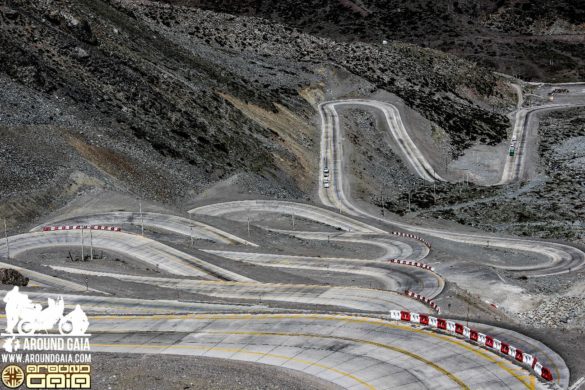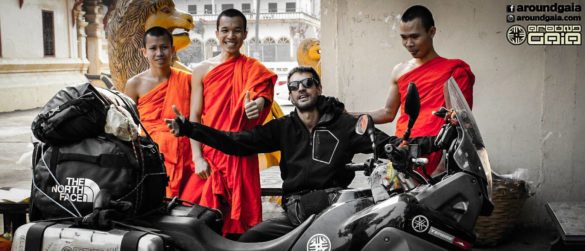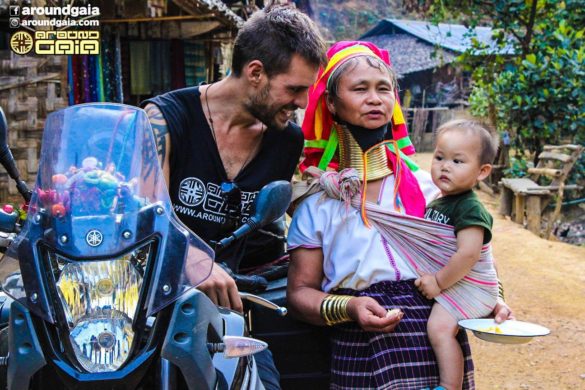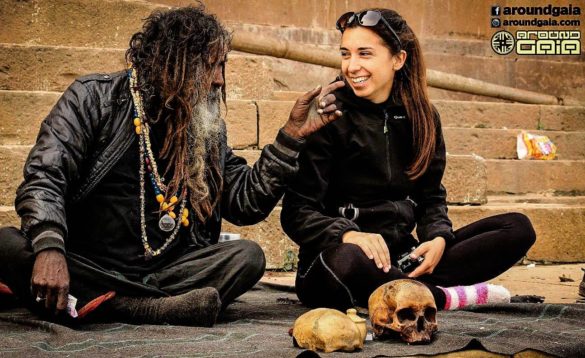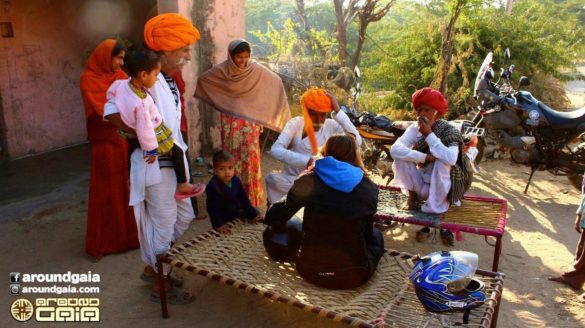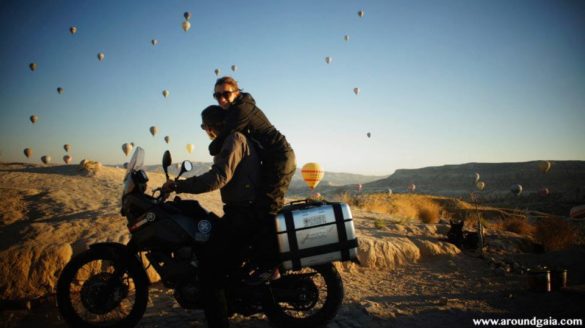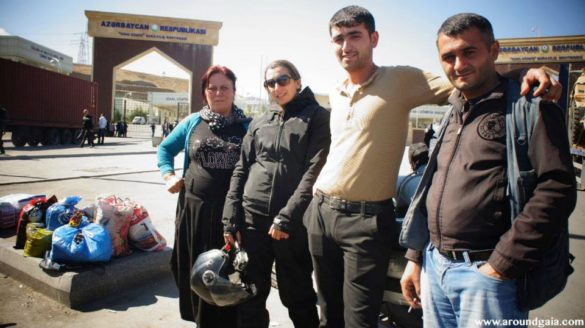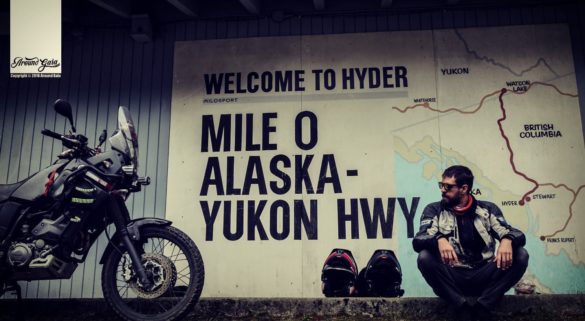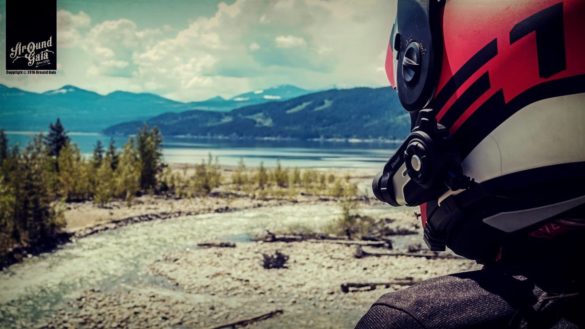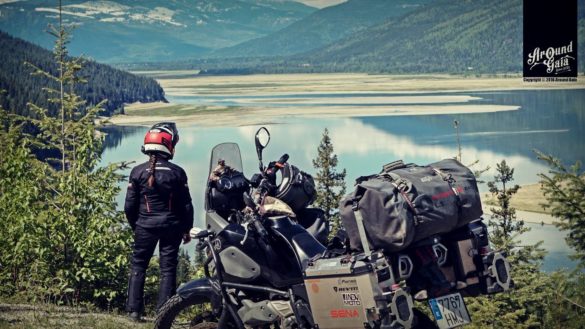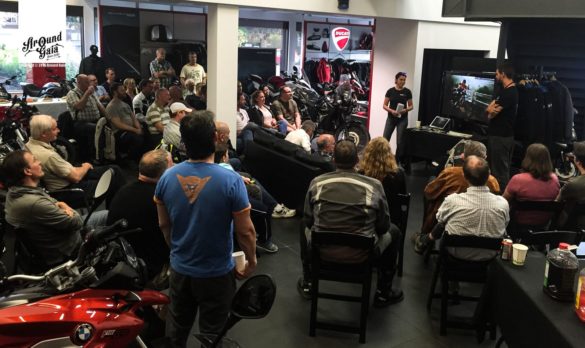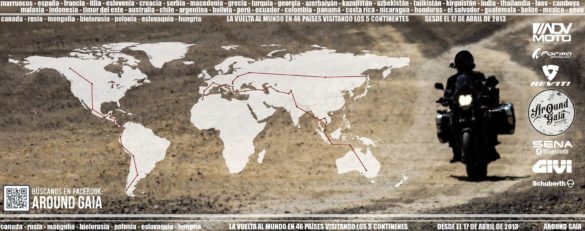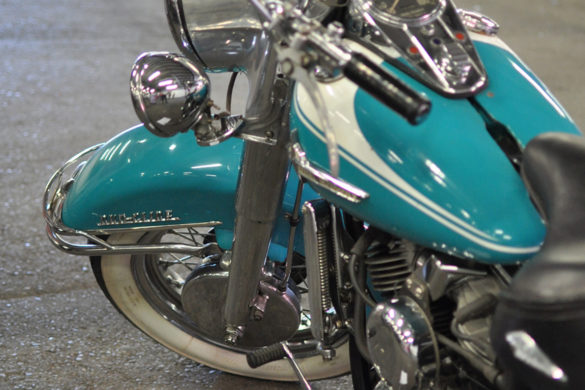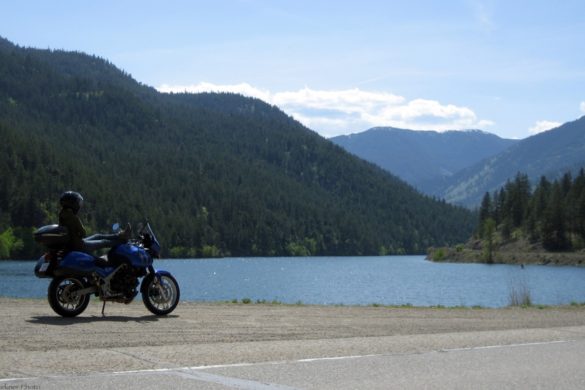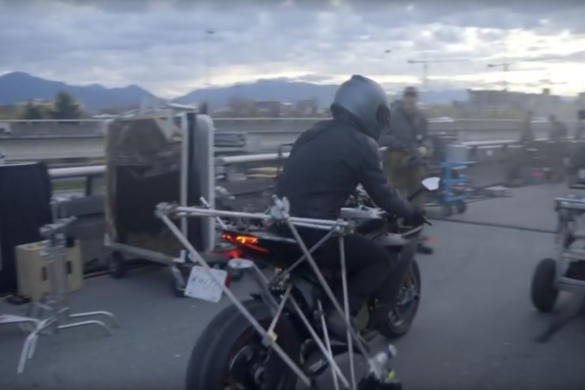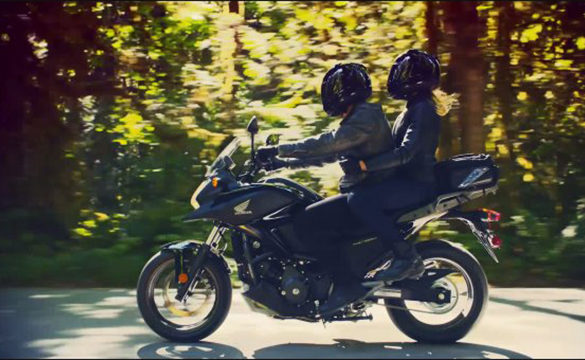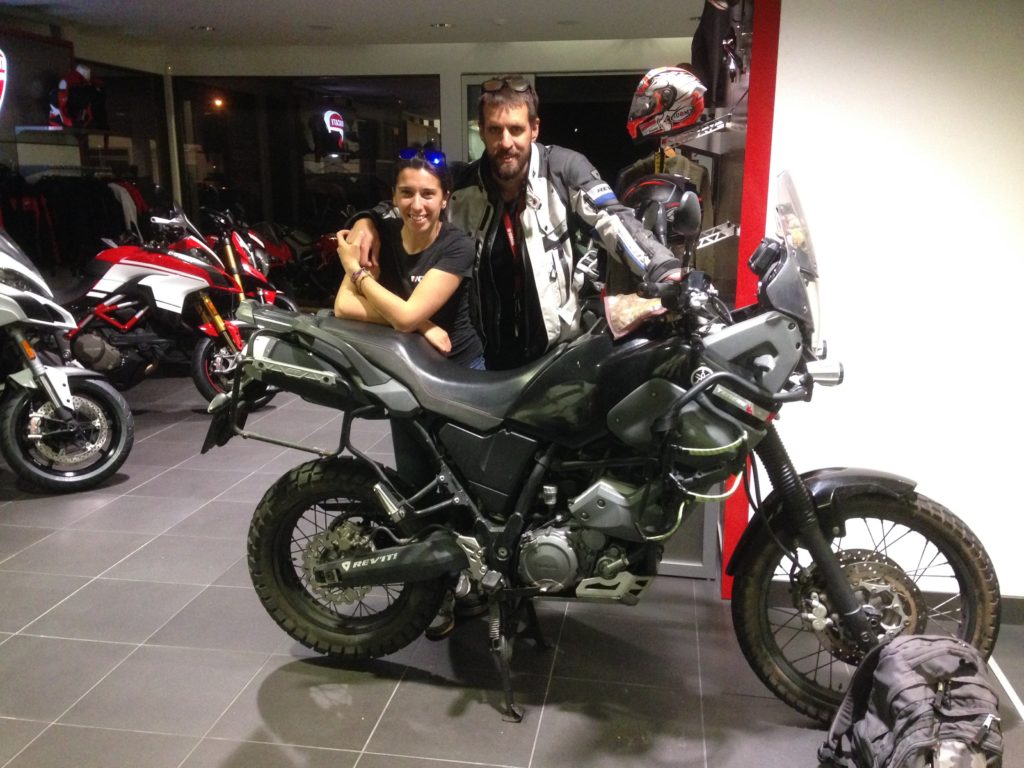
Ivana Colakovska and Manuel Torres have been riding around the world for 3 years on this Yamaha XT660Z Ténéré. On April 19, they visited Vancouver BMW Ducati to share about their trip.
What does it take to travel around the world on a motorcycle? Less than you might think, according to European couple Manuel Torres and Ivana Colakovska, who have been traveling the world for three years without a GPS, and on a single motorcycle.
On April 19, Vancouver BMW Ducati hosted the world travelers to share about their epic three-year motorcycle journey, during which they have clocked 100,000 kilometers in 41 countries. They didn’t start with much, said Ivana, from Macedonia, and Manuel, from Spain. The couple was making and selling jewelry in Mykonos, Greece, when they decided to travel around the world. They saved up enough money to purchase a Yamaha XT660Z Ténéré, the same bike they have been using for the entire trip, and chose three points on a map that they eventually wanted to visit: Australia, South America and Alaska. How and when they would reach those points would be determined along the way. They left for their first destination, Morocco, in April 2013 with few logistics sorted out and no experience riding a big motorcycle. They nearly toppled over after their first try, they both admit.
“We knew we would have many troubles, but we just knew we wanted to do these travels.”- Ivana Colakovska
The couple deliberately faced their challenges head-on, choosing routes that would test their limits. In Tajikistan they spent two weeks crossing the rugged and icy Pamir mountain range, which is among the world’s highest mountains. There they encountered minus 20 degrees Celsius temperatures, isolated roads and extremely rugged terrain. They stopped at houses every 50 to 100 kilometers to warm up and find gasoline before continuing their journey. Both Manuel and Ivana had fears and reservations about the kind of people they would meet in Tajikistan, but they found only kindness among the people they encountered. This was a common trend throughout the rest of the trip, with strangers opening their homes and sharing meals with them in some of the most remote places in the world.
“You have to learn to trust people in the same way that they have to learn to trust you,” Ivana explained. “Once you arrive with a smile, all the doors will open.”
The couple has been offered free accommodation in people’s homes almost everywhere they have been. Only in Canada and the United States have they had to ask for accommodation, ultimately resorting to Couchsurfing, a free hospitality networking website, to find hosts. They have slept on sand floors in bamboo houses and eaten whatever was served to them, even grasshoppers and ants. In India they stayed with a Hindu family of the lowest caste, where they learned about the country’s societal expectations and gender roles.
During their journey, Manuel and Ivana adhere to five travel rules:
- No GPS
They don’t mind getting lost and relying on people’s help and recommendations. - Avoid traveling on highways or freeways
They prefer using small roads and crossing through villages. - Don’t pay for accommodation
By sleeping in the homes of locals, the couple can learn about their hosts’ traditions and have a more authentic cultural experience. - Always use the same bike
They have been on the original Ténéré since day one. - Maintain continuous travel
Manuel and Ivana face challenges as they arise and choose to find solutions while on the road instead of simply returning home.
The couple has currently reached Alaska and would like to visit South Africa next. They have no intentions of slowing down, but they first must overcome a significant challenge they are facing: Ivana has run out of pages in her passport.
Follow Manuel and Ivana’s travels:
Facebook – https://www.facebook.com/aroundgaiaofficial/
Instagram – https://www.instagram.com/aroundgaiaofficial/
Website – http://www.aroundgaia.com
